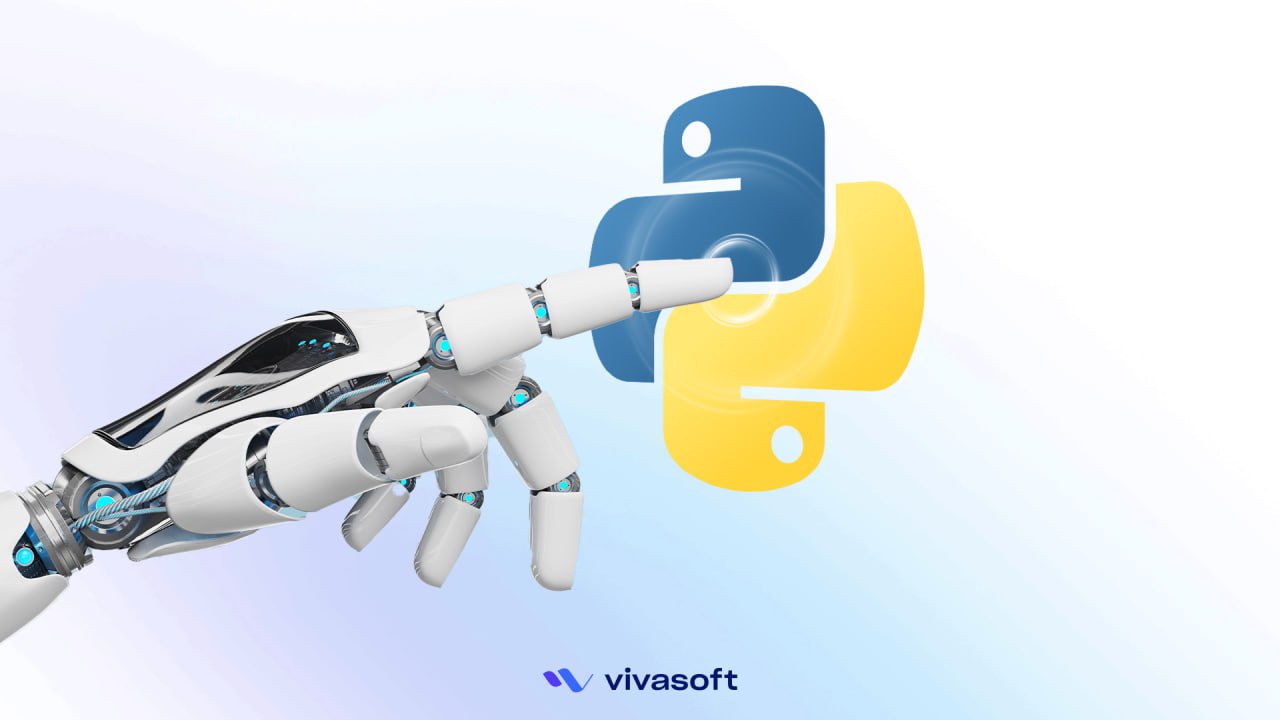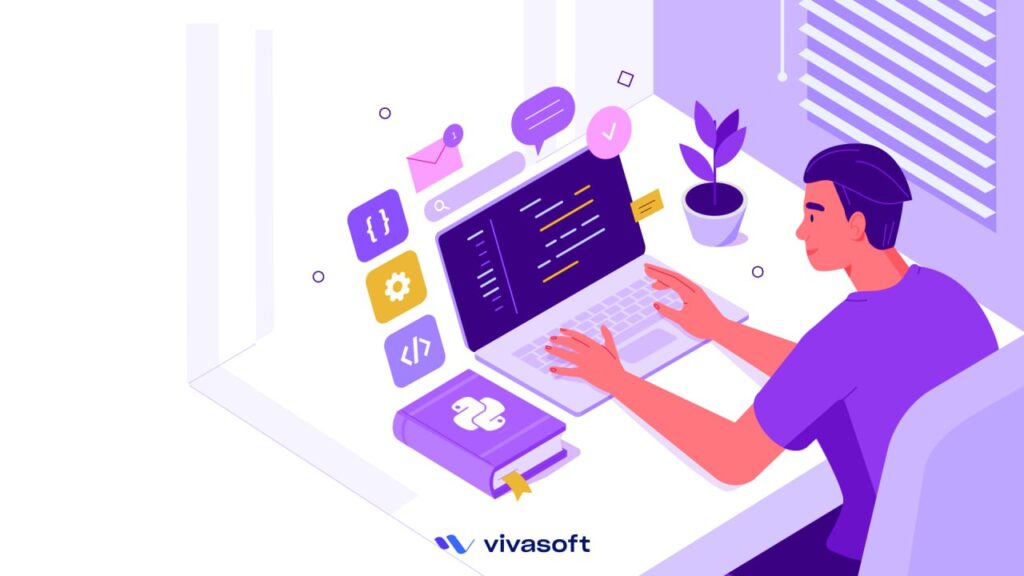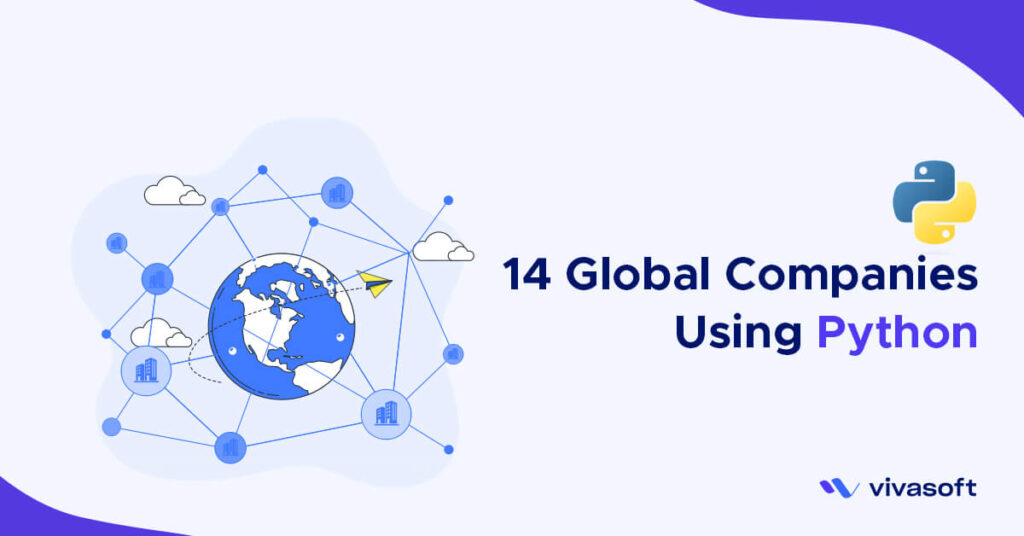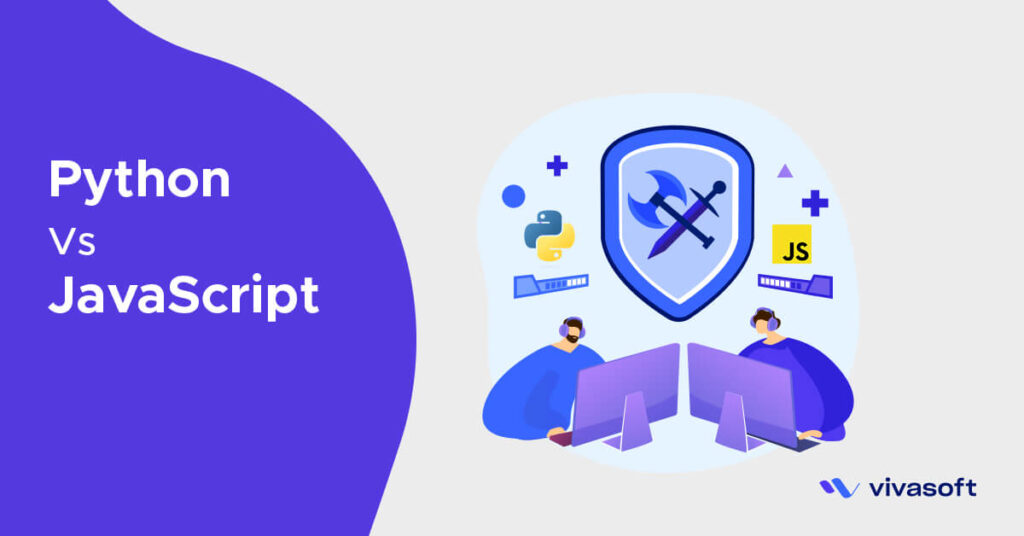Why is Python used for machine learning? Is it slow? Which is the best programming language for machine learning? And what are the important factors in choosing and moving on with a proper programming language? So many questions must be arising in your mind as a Python and machine learning enthusiast. We will dive deep into them right now.
The statement that “Python is slow in case of use in machine learning” is quite opinion-based. We will break down the facts, show the comparison between programming languages for machine learning and finally suggest the best programming language for machine learning.
How Dominant Is Python for Machine Learning?
According to the TIOBE Index for December 2023, Python has the highest rating (13.86%) among all the other programming languages. The 2018 Kaggle Machine Learning and Data Science survey showed that Python has the highest percentage (83%) of preference while SQL was the 2nd having only a 44% rating. So we can understand how popular Python is in this specific sector. Other programming languages such as SQL, R, C, C++ Java, etc. are not even statistically near Python.
As Machine Learning and Artificial Intelligence continue to gain prominence as significant fields in computer science, more and more programming languages are competing for attention in the machine learning space apart from traditional old languages like C++, Java and R, which stand out from the numerous programming languages. This article seeks to explore why Python is preferred and used extensively in machine learning despite its reputation for being slower than other programming languages like C++ and Java, which are faster.
Let’s find out if Python really is the best programming language for machine learning.
Python's Strengths As A Language For Machine Learning
Versatility in Language Choice
Python is a versatile programming language that can be easily integrated with other technologies, including big data tools like Apache Spark and Hadoop. This makes it an excellent choice for developing machine learning applications that require processing large amounts of data.
Ease of Learning and Accessibility
Over 8.2 million developers are using Python for coding, making it the most popular programming language according to the IEEE spectrum. It is a programming language with a simple syntax that makes it well-suited for beginners as well as experienced coders. Python’s interpreted nature allows for interactive and real-time code execution, facilitating quick experimentation and immediate result visualization, which is beneficial for learning the language. Many user-friendly machine learning libraries, such as TensorFlow, Keras, and Scikit-learn, simplify the technical aspects of machine learning algorithms.
Rich Ecosystem and Community Support
Python boasts a thriving community of developers and data scientists who contribute to the development of machine learning libraries, tools, and frameworks. This rich ecosystem offers an abundance of resources and support for those who are developing machine learning applications. At present, the Python Package Index (PyPI) hosts over 200 machine-learning libraries that can be downloaded and seamlessly integrated into Python projects.
Python's Role in Deep Learning

Python has played a crucial role in the advancement of deep learning. Two key factors that highlight Python’s significance in this field are the dominance of TensorFlow and PyTorch and Python’s contribution to neural network advancements.
A. TensorFlow and PyTorch Dominance
The popularity and widespread adoption of TensorFlow and PyTorch have established Python as the de facto language for deep learning. TensorFlow, an open-source library developed by Google, and PyTorch, an open-source library developed by Facebook, are among the most widely used frameworks for building and training deep neural networks. Both frameworks have robust Python APIs and offer extensive support for various deep learning tasks, including computer vision, natural language processing, and reinforcement learning.
B. Python's Contribution to Neural Network Advancements
Python has significantly contributed to the advancements in neural networks, which are the backbone of deep learning. Python’s simplicity, ease of use, and rich ecosystem of libraries have allowed researchers and developers to explore and experiment with different neural network architectures and algorithms. From foundational libraries like NumPy and SciPy to specialized deep learning frameworks like Keras and Fastai, Python provides a wide range of tools for implementing and optimizing neural networks.
Moreover, Python’s seamless integration with other scientific computing libraries, such as Pandas for data manipulation and Matplotlib for data visualization, has made it easier to preprocess and analyze data before feeding it into neural networks. This capability has been instrumental in driving the progress of deep learning research and applications across various domains.
Optimizing Python for Machine Learning (ML)
To optimize Python for machine learning (ML), these techniques can greatly enhance performance.
JIT Compilation and Numba
Just-in-Time (JIT) compilation is a technique where code is compiled dynamically during runtime, improving the execution speed. Numba is a popular library for JIT compilation in Python. It allows developers to write fast numerical code by adding a few decorators to Python functions or using Numba’s just-in-time compiler. This optimization technique can significantly speed up machine learning computations, especially when dealing with large datasets or complex algorithms.
Cython as a Performance Booster
Cython is a superset of Python that aims to combine Python’s ease of use with the performance of low-level languages. It allows developers to write Python code with C-like static typing, which can be then compiled into efficient C code. By utilizing Cython, performance-critical parts of machine learning code can be rewritten to achieve significant speed improvements. This makes Cython a powerful tool for optimizing Python-based machine-learning applications.
Industry Use Cases
Python has successfully defied the notion that it is a slow programming language.
Python and the Django web application framework played a crucial role in the development of Instagram[^2]. The backend infrastructure of Instagram heavily relies on Python and Django due to their speed, simplicity, and extensive ecosystem. This combination enables Instagram to efficiently handle its massive user base and manage complex functionalities.
Spotify
Python is a key component in Spotify’s technology stack, primarily utilized for data analysis and backend services. Spotify’s backend infrastructure consists of numerous services that communicate over ZeroMQ, an open-source networking library written in Python and C++, among other languages. Spotify values Python for its fast development pipeline and coding efficiency. Recent updates to Spotify’s architecture have leveraged ‘gevent’, a library that provides a high-level synchronous API and fast event loop.
Dropbox
Python is extensively employed by Dropbox, a cloud-based storage system. Python is specifically used in the development of Dropbox’s desktop client. Dropbox’s strong commitment to Python is evident in their ability to recruit Guido van Rossum, the creator of Python, who joined their team in 2012. This highlights the deep integration of Python within Dropbox.
Here are some more real-world examples of Python adoption in machine learning.
Airbnb
Airbnb, a leading online platform for travel and accommodation, extensively uses Python for its machine-learning models. Python has enabled Airbnb to personalize search results and make price suggestions based on historical data, helping users find the right accommodations and boosting the company’s profitability.
Uber
Uber, a ride-hailing service, relies on Python-based ML models to optimize ride routes and pricing. Python allows Uber’s ML engineers to analyze large volumes of data and provide accurate predictions, helping reduce wait times and improve pricing options for riders.
Netflix
Netflix, a leading streaming service, uses Python for its content recommendation engine. Python supports Netflix’s recommendation system, which suggests new titles and offers a personalized user experience.
NASA
NASA, the US space agency, uses Python extensively for scientific applications, including ML. Python has allowed NASA to analyze large volumes of data from space missions and develop predictive models for various applications.
Python vs Alternatives

Python vs Lower-level Languages
Python is a high-level programming language, which means that it’s designed to be easy to read and write. It’s also an interpreted language, which means that you don’t have to compile your code before running it. This makes Python great for beginners who want to learn how to program without having to worry about the details of comparatively lower-level languages like R, C, C++, Java, etc.
But the ‘Python vs R, C, C++, and Java battle’ is not one-sided. These lower-level languages may allow you to dig deeper into programming. They offer more control over the hardware and memory management. These are commonly used for system-level programming, embedded systems, and performance-critical applications.
However, Python can leverage the performance of lower-level languages using libraries such as NumPy and Pandas.
Python vs Other High-level Languages
There are many other high-level languages such as Javascript, Go, MatLab, etc. but generally ‘Python vs Javascript, Go, and MatLab’ comparison finds Python to have some extra benefits.
- Python has a vast array of libraries such as PyTorch, TensorFlow, SciPy, Matplotlib, and more that we talked about earlier. They provide ready-to-use tools and functions for machine learning tasks. These libraries make it easier for data scientists and developers to implement machine learning algorithms and handle complex data structures.
- Python has a clear and intuitive syntax that is easy to read and understand, making it beginner-friendly and conducive to collaboration among teams.
- Python has the biggest community support in comparison to any other programming language. The large and active community of data scientists and machine learning practitioners who contribute to the development and improvement of machine learning libraries and tools
- Python can seamlessly interface with other languages such as C, C++, and Java. This allows developers to leverage existing code and libraries written in these languages, combining the simplicity of Python with the performance benefits of lower-level languages when necessary.
Trade-offs and Considerations
Some limitations of Python for machine learning that we need to know
Python is an interpreted language, meaning that source code written in Python must first be converted into bytecode before it can be executed by the interpreter. This process is transparent to the programmer; they simply write their code and run it as any other program would be run on their system. Interpreted languages tend to have slower runtime performance than compiled languages like C or Java because there’s a conversion step involved at runtime. Also, for highly complex projects a lower-level programming language may be preferred as that allows you to go even deeper.
However, this isn’t necessarily a problem for most applications since the overhead will only be incurred when executing the program initially. Once it’s in memory there’s no extra overhead associated with running it repeatedly. You can also use multiple programming languages to develop different parts of the same project. This approach is commonly known as “polyglot programming” and is quite common in the software development industry.
Future Prospects of Python

Ongoing Developments and Innovations
Python continues to be a widely adopted programming language and its ecosystem is constantly evolving, with ongoing developments and innovations. Some key areas of ongoing developments in Python include-
Python Language Enhancements: The Python community frequently releases new versions of the language with improvements and new features. For example, recent releases introduced syntax enhancements, performance optimizations, and support for new programming paradigms.
New Libraries and Frameworks: Python’s library ecosystem continues to expand, catering to various domains and use cases. Innovative libraries and frameworks are regularly being developed, addressing emerging needs in areas such as machine learning, natural language processing, data science, and web development.
Integration with Other Technologies: Python has strong integration capabilities and is often used with other technologies and languages. Ongoing developments focus on seamless integration with databases, cloud computing platforms, big data frameworks, and distributed systems.
Improvements in Performance: Various techniques and tools are being developed to enhance Python’s performance. This includes optimizing Python interpreters, leveraging just-in-time (JIT) compilation and ahead-of-time (AOT) compilation, and exploring alternative execution engines like PyPy and Jython.
Python’s Position in Emerging ML Technologies cannot be overlooked. According to recent data, Python has about 8.2 million developers. And the popularity is growing. We have already discussed how the ML industry giants such as Meta and Nasa have used Python. Even Tesla is also at the forefront of using machine-learning technology. By leveraging Python’s capabilities, Tesla is able to pioneer the use of machine learning technologies in the automotive industry, leading to advancements in autonomous driving and energy efficiency.
So undoubtedly Python is at the top of the preference for the machine learning industry and other sectors.
Overcoming Performance Challenges
When it comes to overcoming the performance challenges of Python, there are several strategies and best practices that can help improve the efficiency of your code and optimize its performance.
Strategies for Efficient Code:
- Algorithmic Optimization: To improve performance, start by analyzing and optimizing your algorithms. Look for ways to reduce computational complexity, minimize redundant calculations, and optimize data structures.
- Use Built-in Functions and Libraries: Python provides a rich set of built-in functions and libraries that are highly optimized for performance. Utilize these functions and libraries when appropriate to avoid reinventing the wheel and taking advantage of existing optimized code.
- Avoid Global Variables: Global variables are slower to access compared to local variables. Whenever possible, use local variables to improve performance.
- Avoid Unnecessary Function Calls: Each function call has a cost associated with it. If you can avoid making unnecessary function calls, your code will run faster.
- Use the Right Data Structures: Python provides many different types of data structures that are optimized for different use cases. Choose the right data structure for your problem to improve performance.
Performance Optimization Best Practices
- Profiling and Benchmarking: Profile your code to identify bottlenecks and areas that need optimization. Benchmarking can help track performance improvements and compare different implementations.
- Data Caching: Utilize caching mechanisms to store and reuse computed results. This can greatly improve performance, especially in cases where the same calculations are repeated.
- Vectorization: Take advantage of NumPy and other vectorized operations to perform computations efficiently on arrays and matrices. This can eliminate the need for explicit loops and significantly improve performance.
- Use Proper Data Structures: Choosing the right data structure for your problem can have a significant impact on performance. Consider using dictionaries for fast lookup operations, sets for membership testing, and lists for sequential access.
- Minimize IO Operations: IO operations such as reading from and writing to files or databases are typically slower. Reduce unnecessary IO operations and optimize the necessary ones.
The Human Factor

Python’s impact on developers and data scientists mostly has positive sides. Firstly, its simplicity and readability make it an accessible language for beginners and experienced programmers alike. This ease of use accelerates development cycles and promotes collaboration among team members. Additionally, Python’s extensive libraries and frameworks, particularly those focused on data science and machine learning, provide developers and data scientists with powerful tools and functionalities for data analysis and modeling. The large and active Python community further enhances this positive impact by contributing to the continuous improvement of the language, sharing knowledge, and providing support.
It just made it easy to become a programmer and made life easy for the programmers. However, challenges related to performance, the Global Interpreter Lock (GIL), and memory consumption are often ignored. Ignoring such factors won’t solve the issue, rather proper understanding and optimization techniques can mitigate these challenges. Moreover, Python has also created a dependency among modern programmers. We cannot just ignore the necessity of learning low-level programming languages.
Summary
So, why is Python used for machine learning if it is slow?
In summary of the overall discussion, we would say that it is technically true that Python is a bit slower compared to some other lower-level programming language options. But in most cases, the slowness is so insignificant that it is not worth mentioning. Even if that is an issue in some cases you can always use the Polyglot programming technique for those specific parts.
Developers mostly use Python for machine learning despite being slower than some other languages for several reasons. Firstly, Python offers a wide range of powerful libraries and frameworks specifically designed for machine learning.
Additionally, Python has a large and active community of developers and researchers contributing to the machine-learning ecosystem. This makes it much easier for anyone to find help for arising problems. The simplicity and readability of Python make it an accessible language for beginners and experts alike.
Lastly, Python’s ability to seamlessly integrate with other languages, such as C or C++, allows for performance-critical components to be implemented in lower-level languages while leveraging Python’s high-level functionality. This hybrid approach allows developers to balance performance and productivity.
So, although Python may not be the fastest language for certain computationally intensive tasks, the advantages it offers in terms of libraries, community support, readability, and flexibility outweigh the performance limitations of most machine learning applications. So Python is the best programming language for machine learning.
FAQs
Is Python fast enough for machine learning?
Python is more than fast enough for Machine Learning (ML) and all the other sectors in almost every case.
Why is Python more used for machine learning?
Because it is the easiest and most practical option to use. The advantages such as libraries, community support, readability, and flexibility offered by Python are second to none.
Which language is best for machine learning?
Considering the community support and versatile application, Python is the best programming language for machine learning. However, this may vary based on the complexity and application of the project.
















